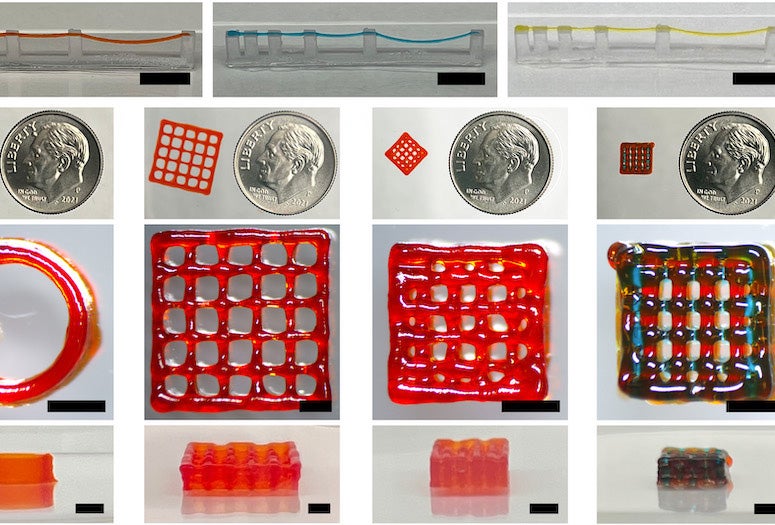How do you build complex structures for housing cells using a material as soft as Jell-O? Rice University scientists have the answer, and it represents a potential leap forward for regenerative medicine and medical research in general.
Researchers in the lab of Rice’s Jeffrey Hartgerink have figured out how to 3D-print the well-defined structures using a self-assembling peptide ink. “Eventually, the goal is to print structures with cells and grow mature tissue in a petri dish. These tissues can then be transplanted to treat injuries, or used to learn about how an illness works and to test drug candidates,” said Adam Farsheed, a Rice bioengineering graduate student and lead author of the study, which appeared in Advanced Materials.
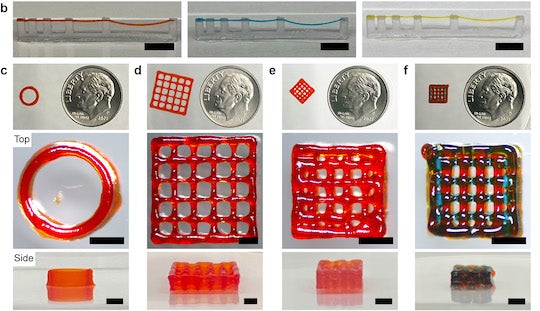
“There are 20 naturally occurring amino acids that make up proteins in the human body,” Farsheed said. “Amino acids can be linked together into larger chains, like Lego blocks. When amino acid chains are longer than 50 amino acids, they are called proteins, but when these chains are shorter than 50 amino acids they are called peptides. In this work, we used peptides as our base material in our 3D-printing inks.”
Developed by Hartgerink and collaborators, these “multidomain peptides” are designed to be hydrophobic on one side and hydrophilic on the other. When placed in water, “one of the molecules will flip itself on top of another, creating what we call a hydrophobic sandwich,” Farsheed said.
These sandwiches stack onto one another and form long fibers, which then form a hydrogel, a water-based material with a gelatinous texture that can be useful for a wide range of applications such as tissue engineering, soft robotics and wastewater treatment.
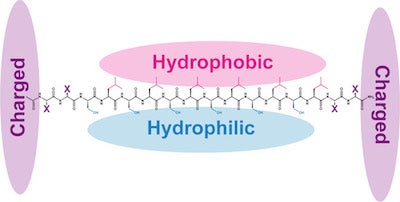
Multidomain peptides have been used for nerve regeneration, cancer treatment and wound healing, and have been shown to promote high levels of cell infiltration and tissue development when implanted in living organisms.
“We know that the multidomain peptides can safely be implanted in the body,” Farsheed said. “But what I was looking to do in this project was to go in a different direction and show that these peptides are a great 3D-printing ink.
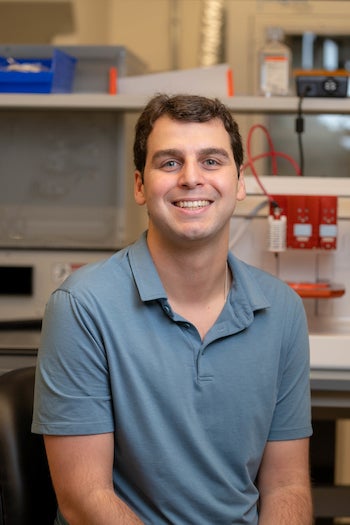
“It might be counterintuitive since our material is so soft, but I recognized that our multidomain peptides are an ideal ink candidate because of the way they self-assemble,” he continued. “Our material can reassemble after being deformed, similar to how toothpaste forms a nice fiber when pushed out of a tube.”
Farsheed’s mechanical engineering background allowed him to take an unconventional approach when testing his hypothesis.
“I had more of a brute-force engineering approach where instead of chemically modifying the material to make it more amenable to 3D printing, I tested to see what would happen if I simply added more material,” he said. “I increased the concentration about fourfold, and it worked extremely well.
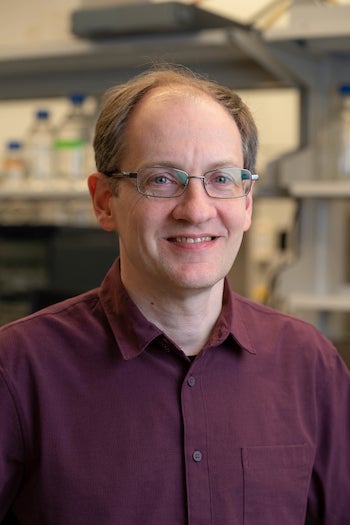
“There have been only a handful of attempts to 3D-print using other self-assembling peptides, and that work is all great, but this is the first time that any self-assembling peptide system has been used to successfully 3D-print such complex structures,” Farsheed continued.
The structures were printed with either positively charged or negatively charged multidomain peptides, and immature muscle cells placed on the structures behaved differently depending on the charge. Cells remained balled up on the substrate with a negative charge, while on the positively charged material the cells spread out and began to mature.
“It shows that we can control cell behavior using both structural and chemical complexity,” Farsheed said.
Hartgerink is a professor of chemistry and bioengineering and associate chair for undergraduate studies. Farsheed is a bioengineering graduate student and lead author on the study. Additional study co-authors are undergraduate student Adam Thomas and graduate student Brett Pogostin.
The National Institutes of Health (R01 DE021798) and the National Science Foundation Graduate Research Fellowships Program supported the research.
-30-
- Peer-reviewed paper:
-
3D Printing of Self-Assembling Nanofibrous Multidomain Peptide Hydrogels | Advanced Materials | DOI: 10.1002/adma.202210378
https://doi.org/10.1002/adma.202210378Authors: Adam Farsheed, Adam Thomas, Brett Pogostin and Jeffrey Hartgerink
- VIDEO is available at:
-
https://youtu.be/B-YzPckVW7I
Description: Using a peptide-based ink, Rice researchers can print soft-yet-resilient 3D structures that can house cells. (Video courtesy of the Hartgerink lab/Rice University)
- Image downloads:
-
https://news-network.rice.edu/news/files/2023/02/013023_Farsheed_3_LG.jpg
CAPTION: Structures printed using the peptide-based 3D-printing ink developed by Rice’s Hartgerink lab. A dime is included for scale. (Image courtesy of Hartgerink lab/Rice University)https://news-network.rice.edu/news/files/2023/02/Figure_1-copy.jpg
CAPTION: The structure of a multidomain peptide used as a building block for a 3D-printing ink by Rice’s Hartgerink lab. (Image courtesy of Hartgerink lab/Rice University)https://news-network.rice.edu/news/files/2023/02/230201_Adam-Farsheed_LG.jpg
CAPTION: Adam Farsheed is a bioengineering graduate student and the lead author on the study. (Photo by Gustavo Raskosky/Rice University)
https://news-network.rice.edu/news/files/2023/02/230201_Hartgerink_LG.jpg
CAPTION: Jeffrey Hartgerink is a professor of chemistry and bioengineering and associate chair for undergraduate studies. (Photo by Gustavo Raskosky/Rice University) - Related stories:
-
Faculty recognized with award for superior teaching:
https://news.rice.edu/news/2022/faculty-recognized-award-superior-teaching
Collagen structures get the royal reveal:
https://news.rice.edu/news/2021/collagen-structures-get-royal-reveal
‘Sticky’ ends start synthetic collagen growth:
https://news2.rice.edu/2014/10/27/sticky-ends-start-synthetic-collagen-growth-2/
Synthetic collagen promotes natural clotting:
https://news2.rice.edu/2014/04/09/synthetic-collagen-promotes-natural-clotting-2/
- Links:
-
Hartgerink Research Group: https://hartgerink.rice.edu
Department of Chemistry: https://chemistry.rice.edu
Department of Bioengineering: https://bioengineering.rice.edu
Department of Chemical and Biomolecular Engineering: https://chbe.rice.edu/BioScience Research Collaborative: https://brc.rice.edu/
- About Rice:
-
Located on a 300-acre forested campus in Houston, Rice University is consistently ranked among the nation’s top 20 universities by U.S. News & World Report. Rice has highly respected schools of Architecture, Business, Continuing Studies, Engineering, Humanities, Music, Natural Sciences and Social Sciences and is home to the Baker Institute for Public Policy. With 4,240 undergraduates and 3,972 graduate students, Rice’s undergraduate student-to-faculty ratio is just under 6-to-1. Its residential college system builds close-knit communities and lifelong friendships, just one reason why Rice is ranked No. 1 for lots of race/class interaction and No. 1 for quality of life by the Princeton Review. Rice is also rated as a best value among private universities by Kiplinger’s Personal Finance.

